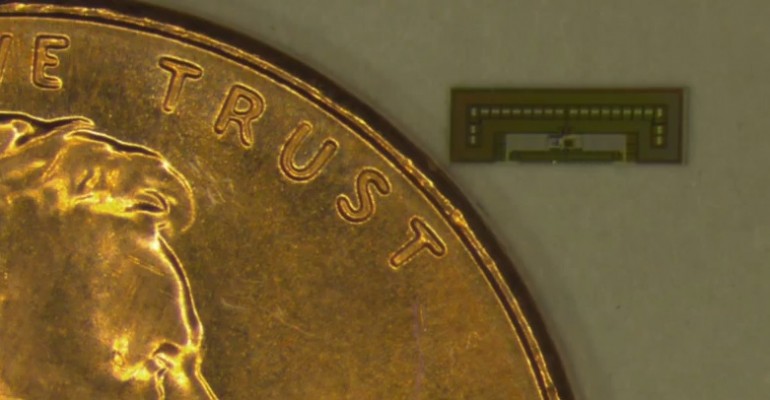
A new wireless chip the size of ant is poised to jumpstart the Internet-of-Things, infusing gadgetry with wirelessness without requiring a power source. The chip, developed by researchers from Stanford University and the University of California, Berkley, is powered exclusively by ambient radio waves, and contains a transmitting and a receiving antenna plus a central processor.
The inexpensive and easy to manufacture device uses wireless communication, built-in logic control, and remote sensing to compute, execute, and relay commands, or essentially ─ provide ordinary gadgets with the smart sensors and remote controls needed to connect them to the Internet. The researchers claim the device is so low powered that it obtains all the energy it needs from the same electromagnetic waves that carry signals to its receiving antenna. Similarly, if the device were powered by a AAA battery, it would last for nearly a century.
“The next exponential growth in connectivity will be connecting objects together and giving us remote control through the web,” said Amin Arbabian, an assistant professor of electrical engineering and the principal designer of the new devices. “How do you put a bi-directional wireless control system on every light bulb?” Arbabian adds, “by putting all the essential elements of a radio on a single chip that costs pennies to make.”
A closer look at the technicalities reveals that the chip incorporates VLSI (Very large Scale Integration) single-chip architecture, operates at 24 GHz/ 60 GHz transmit and receive using dual antennas built-in into one module, and transmits up to 50 cm. The 50 cm range may seem insignificant at first glance, but for the cost of the few pennies it takes to fabricate such a chip, it would be completely feasible to deploy an armada of chips throughout the entire household, perhaps every meter or so.
Arbabian states that the antennas needed to be at least one-tenth the size of a Wi-Fi and operate at the rapid rate of 24 billion cycles per second in order to function. Strictly speaking, standard transistors cannot easily process such rapidly oscillating signals, forcing Arbabian and Co. to tweak the circuit and electronic design.
Currently, one hundred prototypes of the radio-on-a-chip have been constructed by French semiconductor manufacturer STMicroelectronics. Arbabian demonstrated the chips in action at the VLSI Technology and Circuits Symposium in Hawaii, proving that they can carry commands and relay instructions.
The radio-on-a-chip fulfills a necessary role in proliferating the Internet-of-Things by providing an inexpensive microcontroller than can be installed on any gadget.
Via Stanford.edu
Advertisement
Learn more about Electronic Products Magazine





